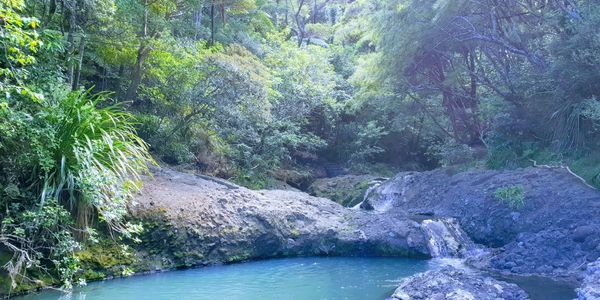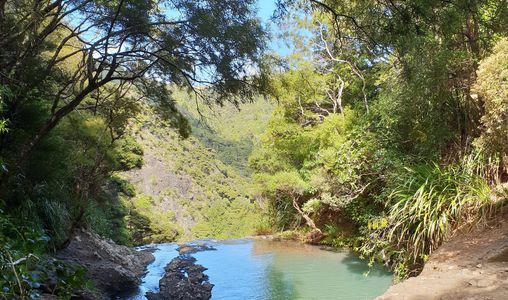The Pursuit of Truth
The Kauri Dieback issue is incredibly divisive. Has it been in the soil forever, was it introduced in the soil of plants imported from Asia in the 1950’s? Or is there some other potential vector? The fact remains that to date we simply don’t know. Despite it’s origins what we do know is that Phytophthora agathidicida otherwise known as PTA or Kauri Dieback has the ability to kill Kauri. In this site we hope to expose the published research and peer reviews of that research so you can make up your own mind as to what sort of response is appropriate.

Who are we?
We are a group of individuals with an interest in opening the forests and regaining access, so long as the scientific community are in agreement that we are not perpetuating the spread of the disease in doing so.

How do we operate?
We seek to consolidate all of the scientific research into a single site so you can read the key points and counter points we they exist today through published material. We encourage contact, contribution and contribution.
Site Content

Is Phytophthora agathidicida (PTA) killing kauri?
PTA is believed to be causing kauri dieback, however there is no clear evidence that it is infecting and killing in healthy kauri, or that it is the main driver of kauri dieback disease.
The 2021 Waitākere Ranges Kauri Population Health Monitoring survey found that:
- Only 23% of the symptomatic trees that were soil sampled showed PTA
- 6% of healthy trees had PTA in their soil, and 10 % of ill-thrift trees had PTA (meaning trees without ‘dieback’ but failing to thrive).1
Note this shows a statistically significant correlation between a symptomatic kauri and having PTA found in its soil, but correlation does not mean causation.
A 2020 review of kauri science stated that there is a critical knowledge gap as to whether kauri and PTA can co-exist without disease onset.2
References:
1. Froud, K., Y.C. Chew, J. Kean, J. Meiforth, S. Killick, E. Ashby, R. Taua-Gordon, A. Jamieson, L. Tolich 2021 Waitākere Ranges kauri population health monitoring survey. Auckland Council technical report, TR2022/8; 2022.
2. Bradshaw, R. E.; Bellgard, S. E.; Black, A.; Burns, B. R.; Gerth, M. L.; McDougal, R. L.; Scott, P. M.; Waipara, N. W.; Weir, B. S.; Williams, N. M.; Winkworth, R. C.; Ashcroft, T.; Bradley, E. L.; Dijkwel, P. P.; Guo, Y.; Lacey, R. F.; Mesarich, C. H.; Panda, P.; Horner, I. J., Phytophthora agathidicida: research progress, cultural perspectives and knowledge gaps in the control and management of kauri dieback in New Zealand. 2020, 69 (1), 3-16.
Debunking the misconception that “70% of infected kauri are found within 50m of a walking track”
That statement has been mentioned in almost all articles about kauri dieback throughout the media, at Auckland Council Public meetings, on TV, in Parliament and is still (April 2024) on the Tree Council and Forest & Bird website and on Wikipedia. There is no scientific report to substantiate this. Auckland Council was asked for clarification (via LGOIMA requests) and their responses were clear:
“This statement is incorrect”.3
“Unfortunately, this sentence has been summarised and misquoted in the media and by some external parties”.4
It doesn’t appear that Auckland Council has ever tried to correct this in the media.
This statement has arisen from a misinterpretation of the Auckland Council’s 2017 report finding that “71% of kauri dieback zones and 56% of possible kauri dieback zones (are) within 50 m of a track”.5 As the kauri dieback ‘zones’ were very large, this statement does not imply correlation with track location. In fact, in a letter from Auckland Council it was confirmed:
“This data [the Waitākere Kauri Dieback survey until mid-2017] does not comprise evidence that the area near to the track network is any more or less diseased than other areas in the Waitākere Ranges"
References:
3. Auckland Council LGOIMA request 8140008820. 8 July 2021.
4. Auckland Council LGOIMA response 8140005214. 5 August 2019.
2021 Waitākere Ranges survey correlation between PTA and walking tracks
The 2021 Waitākere Ranges Kauri Population Health Monitoring survey investigated associations between PTA presence, symptomatic kauri, and distance to nearest track.1
There were four risk factors strongly associated with PTA detection in soil:
- Elevation
- Distance to historic timber sites
- Distance to coast
- Distance to closest neighboring tree
There were three risk factors strongly associated with symptomatic kauri:
- Distance to closest PTA site
- Distance to historic timber site
- Kauri diameter at breast height
Note that “distance to track” was not identified as a strong association, despite how it has been portrayed in the media.
“Distance to tracks” was an ‘association of note’ for PTA presence and symptomatic kauri. There was a significant association for both in the ‘non-spatial model’. However, the researchers identified the need to reinterpret the data as a ‘spatial model’, which accounts for spatial auto-correlation (i.e. trees close to each other may be more similar in values). In this ‘spatial model’ there was no significant correlation (meaning the science is 95% sure there is no association).
Are the track closure/upgrades improving kauri health or containing PTA?
There is no scientific data to demonstrate whether track closures/upgrades have had any effect. This is because the baseline survey was published in 2022, and we cannot gather any conclusions about changes in kauri health or containment or PTA until a follow-up survey is completed.
Anyone who claims that the track closures/upgrades have had an impact either doesn’t understand how science works, or is spreading lies.
Regardless, a follow-up survey cannot tell us whether track closures/upgrades have had any effect, because there is no control to compare to. A control is where no action has been taken, ie tracks left open to the public with no upgrades. Without this, unfortunately we will never know whether track closures have been impactful, or if changes to kauri health are due to other factors such as weather.
What is Kauri Dieback?
Best explained here . Phytophthora Agathidicida or PTA affects around 13 species of tress from Malaysia through to Australia and of course New Zealand where it has impacted Kauri
What research has been done?
There are a number of research papers going right back to the 1970's which we will publish links to shortly.
Has the research been peer reviewed?
There are certainly some peer reviews of the various papers published and these will e listed.
What is the response to this issue from council, government and Iwi?
Soon we will publish a series of comments and links
Here are some FAQs
You guessed it. Watch this space.
Contact Us
How Can You Help?
If we've gotten something wrong, please point it out. If you wish to contribute something give us a holler.
89 Piha Road, Piha, New Lynn 0772, New Zealand